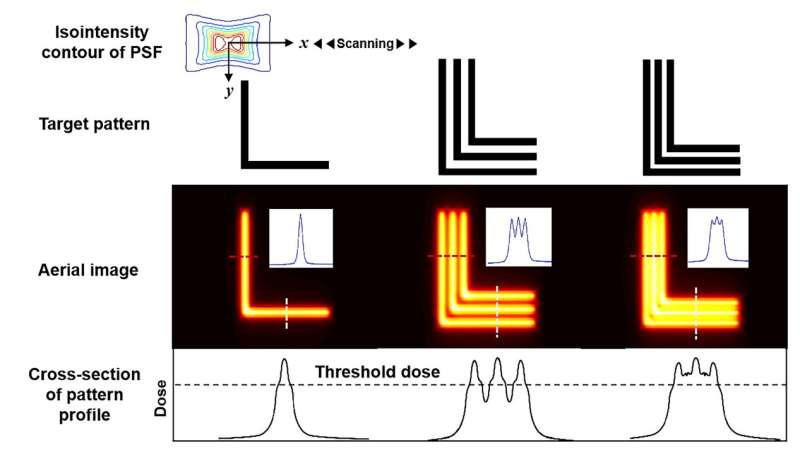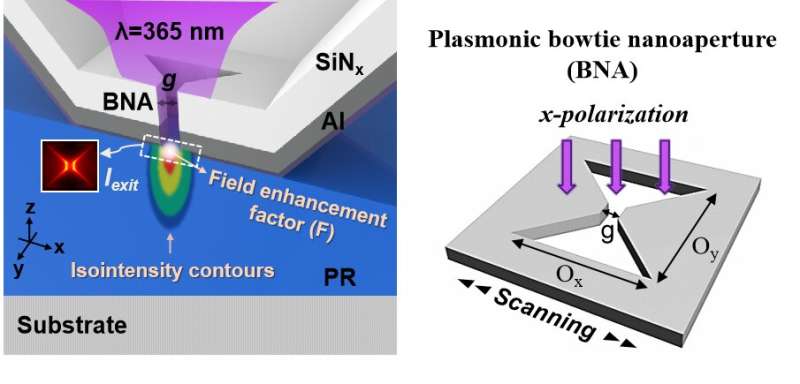This article has been reviewed according to Science X's editorial process and policies. Editors have highlighted the following attributes while ensuring the content's credibility:
fact-checked
trusted source
proofread
Scientists improve near-field optical proximity correction via spatial modulation

Researchers led by Prof. Wei Yayi from the University of Chinese Academy of Sciences (UCAS) have improved the final pattern fidelity in near-field nanolithography, a breakthrough in understanding the near-field diffraction limit of an evanescent-field-based patterning system.
The results, published in Microsystems & Nanoengineering, is the first to investigate the physical origin of the near-field optical proximity effect (OPE), and the theoretical calculations and simulation results indicate that the evanescent-field-induced rapid loss of high-k information is one of the main optical contributors to the near-field OPE.
As the feature size is continuously scaled down, the pattern profile generated by a near-field lithography exhibits very poor pattern quality due to the near-field OPE, far below the minimum requirement for nanofabrication. Therefore, it is essential to minimize the near-field OPE in order to achieve the highest pattern resolution and fidelity possible with the plasmonic lithography process.
In this study, the researchers investigated the physical concepts behind the near-field OPE in a maskless plasmonic lithography, and proposed a near-field optical proximity correction (OPC) method via the spatial modulation of nanopatterns to improve the final pattern quality.

Precise OPC requires accurate exposure, so numerical calculations were performed to estimate the point spread function and quantitatively analyze the near-field enhancement effect and the size-dependence of the plasmonic near-field.
Furthermore, an analytical formula was proposed to quantitatively analyze the effect of the rapidly decaying feature of the evanescent field on the near-field OPE, and the theoretical limit of the pattern fidelity.
In view of the features of the near-field OPE in plasmonic lithography, a fast and effective method for correcting the evanescent-field-induced high-k information loss by exposure dose compensation in advance in the exposure dose map was carried out. And the simulation results showed that the final pattern fidelity can be greatly improved.
More information: Dandan Han et al, Enhancement of pattern quality in maskless plasmonic lithography via spatial loss modulation, Microsystems & Nanoengineering (2023). DOI: 10.1038/s41378-023-00512-4
Provided by Chinese Academy of Sciences





















